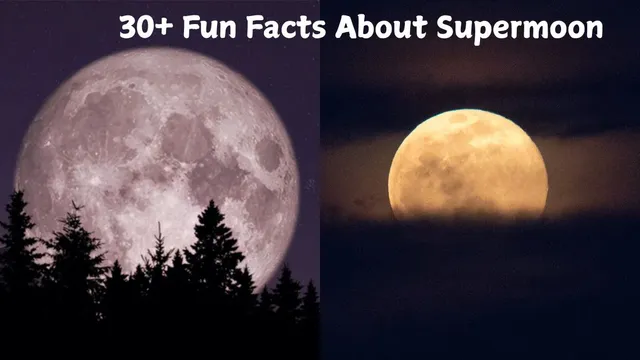- By Aditi Priya Singh
- Wed, 05 Nov 2025 08:12 PM (IST)
- Source:JND
30+ Fun Facts About Supermoon: The Supermoon is one of the most amazing astronomical phenomena that never fails to captivate skywatchers. On October 7, 2025, sky watchers were treated to a breathtaking Supermoon this year, when the Moon was remarkably large and bright in the night sky. The Moon will once more shine in its full glory, closer and brighter than usual, on Kartik Purnima, November 5, 2025, but the magic doesn't stop there. Both astronomy enthusiasts and religious observers will enjoy this uncommon back-to-back Supermoon event.
A supermoon occurs when the full moon appears almost 14% larger and 30% brighter than usual during its perigee, or closest approach to Earth. This radiant display is linked to prosperity, emotional equilibrium, and divine energy in all cultures. The upcoming Kartik Purnima Supermoon promises to be a night full of beauty, radiance, and celestial wonder, whether you're watching for scientific curiosity or a spiritual connection.
Basic Science Facts About Supermoon
1. A Supermoon occurs when the full Moon coincides with the Moon’s closest approach to Earth (perigee).
2. The Moon can appear up to 14% larger and 30% brighter than usual during a Supermoon.
3. The term “Supermoon” was coined by astrologer Richard Nolle in 1979.
4. Scientifically, it’s called a perigee-syzygy — when the Earth, Moon, and Sun align.
5. There are usually 3–4 Supermoons in a year.
Astronomical Facts About Supermoon
6. The average distance from Earth to the Moon is about 384,400 km, but during a Supermoon, it’s around 356,000 km.
7. Supermoons are about 30% brighter than micromoons (when the Moon is farthest from Earth).
8. Supermoons can influence ocean tides, creating slightly higher “super tides.”
9. The Moon looks especially big when near the horizon due to an optical illusion.
10. Lunar eclipses can sometimes coincide with a Supermoon, creating a Super Blood Moon.
Historical and Mythological Facts
11. Ancient civilisations believed Supermoons brought good harvests.
12. Some cultures linked Supermoons to fertility and new beginnings.
13. In medieval times, people associated Supermoons with supernatural events.
14. The term “Blue Moon” sometimes overlaps with a Supermoon — when two full moons occur in one month.
15. Native American tribes named Supermoons after seasonal changes, like “Harvest Moon” or “Wolf Moon.”
Observation and Photography Facts
16. The best time to photograph a Supermoon is during moonrise or moonset.
17. Urban light pollution can reduce the brightness effect of a Supermoon.
18. Using a tripod and zoom lens enhances moon photography.
19. The Moon’s colour can appear orange or red depending on the atmosphere.
20. Many observatories host public viewing events during Supermoons.
Fun and Curious Facts
21. Supermoons can appear slightly different depending on your location on Earth.
22. NASA tracks and names every Supermoon occurrence.
23. The largest Supermoon of the 21st century occurred in November 2016.
24. Supermoons don’t affect human behaviour — that’s just a myth!
25. Some people organise “moon parties” to celebrate the event.
ALSO READ: National Moon Day: 30+ Mysterious Moon Facts And Trivia You Never Knew
Future Supermoon Events
26. In 2025, the biggest Supermoon will occur on October 7, and one will appear on 5 November on Kartik Purnima.
27. The 2025 Supermoon will appear about 357,000 km away from Earth.
28. Supermoons often occur in pairs or trios within the same year.
29. Astronomers predict at least 48 Supermoons between 2025 and 2050.
30. The Supermoon cycle repeats roughly every 14 months.
31. Many people use the Supermoon for meditation and manifesting intentions.
32. In astrology, Supermoons are said to intensify emotions and self-awareness.





